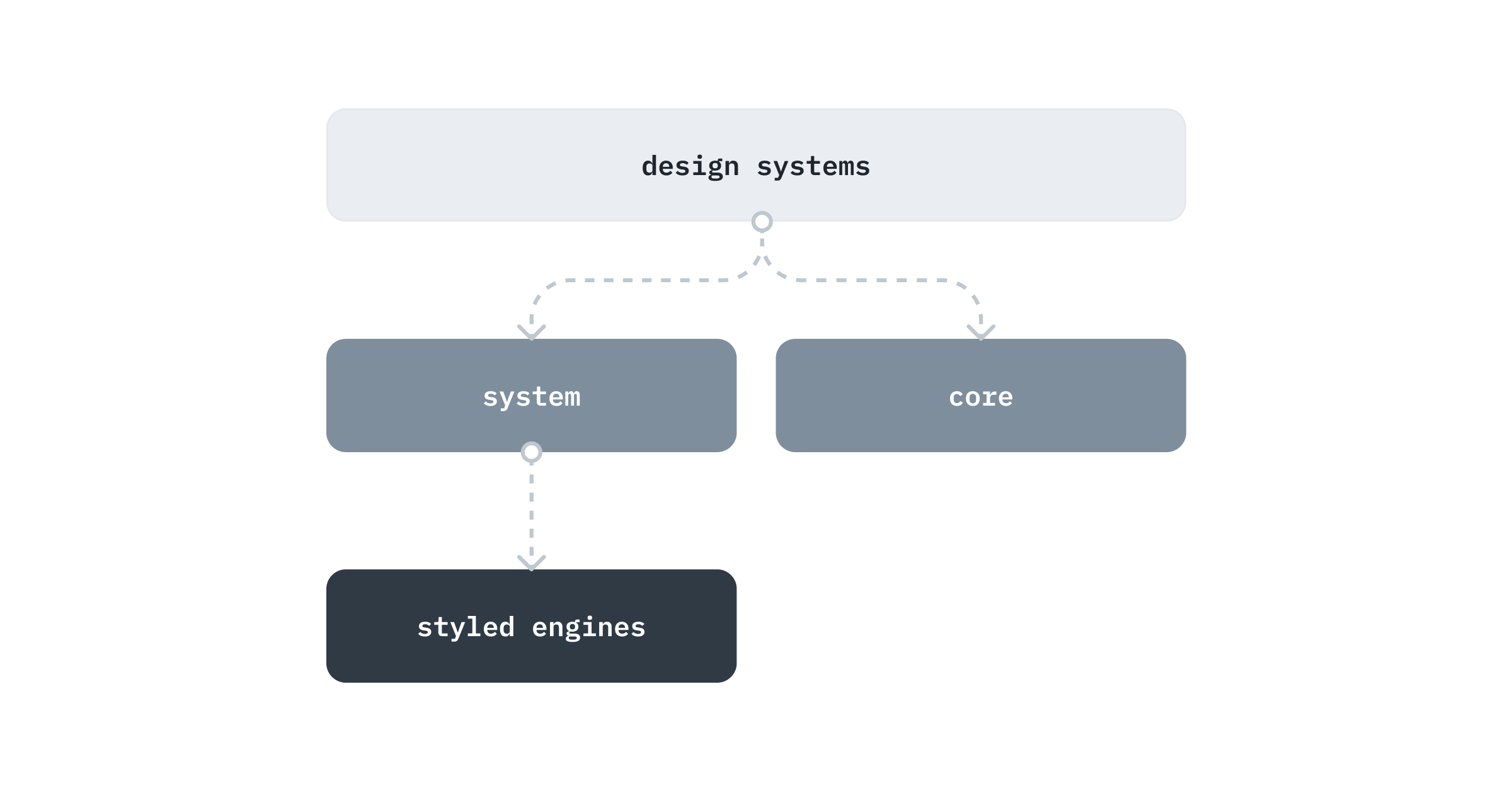Understanding MUI packages
An overview of the MUI packages and the relationships between them.
Tl;dr
- Use
@mui/materialif you want to use the components following the Material Design guidelines.💡 You can import styling APIs (eg.
ThemeProvider,styled, etc.) directly from@mui/material. - Use
@mui/coreif you want to style the components from scratch using your preferred styling method.💡 This package can be imported alongside
@mui/materialwithout an installation. - Use
@mui/systemif you want APIs that enable building your own design system from scratch.
MUI packages
The following is an up-to-date list of @mui public packages.
@mui/material@mui/system@mui/core@mui/styled-engine@mui/styled-engine-sc@mui/styles
Other packages, such as
@mui/utilsand@mui/types, are used internally in the packages listed above.
Why does MUI have multiple packages? Why not just one?
MUI started as a single package that provided React Material Design components. However, as the library grew and more people started to use it, we saw an opportunity to break the main package down into smaller parts. For example, there was rising interest in specific use cases, such as using a version of the components without styles so as to use a preferred styling method, or using the MUI styling API to build a design system.
For this reason, abstracting into smaller packages not only allows MUI to grow out of Material Design, but also extends how the library can be used, providing more flexibility and customizability.
The packages can be categorized into 3 layers, as shown in the picture below:

Let's take a look at each layer to understand how they work together, starting from the bottom:
Styled engines
This layer is specifically related to stylesheets.
Currently we use emotion as the default style library for creating stylesheets.
In addition, we also provide an adapter for developers who prefer to use styled-components.
These are the packages in this layer:
@mui/styled-engine: an emotion wrapper@mui/styled-engine-sc: a styled-components wrapper@mui/styles: JSS wrapper (deprecated)
These packages are already included in the design system package, so you don't need to worry about importing them if you're using
@mui/material, but you will need to install if you wish to replace emotion as the default, as well as your chosen style library.
System
There is only one package in this layer - @mui/system.
It uses a styled-engine package and provides APIs for building a design system from scratch, for example, styled is enhanced to provide more theming capabilities.
Here are some benefits:
- You have full control of the
themeobject. - The
styledAPI supports thesxprop by default. - Components created with
styledare themeable via slots & variants.
Note: you will have to install either
emotionorstyled-components, because thesystempackage depends on it.
Core
The core layer, @mui/core, is also known as unstyled components.
It provides only React component functionality and accessibility features without any styles. It's very useful if you want to take full control of the styling, but don't want to spend time building components from scratch.
Since it doesn't rely on any specific styling solution, you can pick a method that best fits your needs, from pure CSS to CSS-in-JS.
For more details, check out the unstyled components page
Design system
This is the most used layer (based on npm downloads) because it comes with everything you need to get started:
- Theming capabilities (has
@mui/systemas dependency). - Accessible components, and utility hooks (has
@mui/coreas dependency). - Default styles based on the design language being followed.
Currently, MUI has one package in the design system layer, @mui/material, but we plan to add more in the future.
This package provides components that follow the Material Design guidelines and also re-exports necessary APIs from its dependencies.
Since it has @mui/system and @mui/core as dependencies, you don't need to install or import them separately.
Instead, you should import any modules you need from @mui/material directly.
There are, however, some cases where you might want to use building blocks from @mui/core instead. Let's imagine we're working on an application that mainly uses @mui/material with a custom theme and we've been given a Switch component design to develop that is very different from the one found in Material Design.
In this case, instead of overriding the Switch from @mui/material we could use the styled API to customize the unstyled version of the Switch, available in @mui/core, from scratch:
import { styled } from '@mui/material/styles';
import SwitchUnstyled, { switchUnstyledClasses } from '@mui/core/SwitchUnstyled';
const Root = styled('span')(`
position: relative;
display: inline-block;
width: 32px;
height: 20px;
& .${switchUnstyledClasses.track} {
// ...css
}
& .${switchUnstyledClasses.thumb} {
// ...css
}
`);
export default function CustomSwitch() {
const label = { componentsProps: { input: { 'aria-label': 'Demo switch' } } };
return <SwitchUnstyled component={Root} {...label} />;
}
Note: there is no need to install
@mui/corebecause it is a built in dependency the design system package,@mui/material.